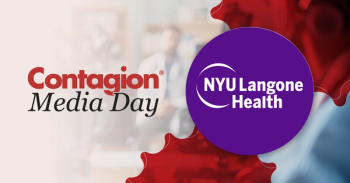
Infection Prevention & Control Programs—A Vital Component to Antimicrobial Stewardship
SHEA and APIC have declared infection control programs as critical components of antimicrobial stewardship programs—are you including them at your institution?
Antimicrobial resistance is a difficult biological threat and one that despite our best efforts, continues to challenge health care practitioners. The overuse of antibiotics in agriculture and the overprescribing habits of health care professionals have contributed to this growing problem. Recent reports have revealed that one-third of hospitalized children are
Furthermore, a recent
A problem with a
In 2012, the Association for Professionals in Infection Control and Epidemiology (APIC) and the Society for Healthcare Epidemiology of America (SHEA), released a joint position paper regarding the collaborative partnership between infection preventionists (IPs) and health care epidemiologists (HEs) for antimicrobial stewardship. The 2 organizations emphasized the role IPs and HEs have in antimicrobial stewardship efforts through their unique skills and ability to provide guidance on surveillance, intervention implementation, and more.
Building on these recommendations,
Ultimately, the authors of the new joint position paper underscore the inherent link between antimicrobial use and the transmission of multidrug-resistant organisms (MDROs). IPC programs include a multitude of aspects that impact antimicrobial stewardship and curbing the spread of MDROs, including surveillance, increasing awareness of antimicrobial resistance, ensuring isolation and standard precautions are followed, and ensuring prompt detection of MDROs, and more. Indeed, these are just a handful of ways IPC programs work to reduce the burden of antimicrobial resistance.
In terms of stewardship, the utilization of IPC skills and subject matter expertise can make a difference. The SHEA and APIC authors call on antimicrobial stewardship programs to “harness the talents of all members of the health care team” and utilize the IPC program strategies of best care bundles and education efforts to help strengthen health care practices.
IPC program strategies to reduce health care-associated infections trickle into cutting down on the presence and transmission of MDROs, which is why these programs are so critical for antimicrobial stewardship initiatives. IPC programs harness the knowledge of subject matter experts who are already fighting against behavioral and institutional barriers that result in health care-associated infections and poor practices (ie, hand hygiene, personal protective equipment compliance, etc). This makes them a strong tool in the stewardship arsenal. Ultimately, antimicrobial stewardship initiatives require hospital administration support; however, ensuring these groups are inclusive of members that will truly help lead the fight against antimicrobial resistance is critical. Including and empowering IPC programs within antimicrobial stewardship efforts can only serve to help these initiatives succeed—so what are we waiting for?
Newsletter
Stay ahead of emerging infectious disease threats with expert insights and breaking research. Subscribe now to get updates delivered straight to your inbox.



















































































































































































































































































